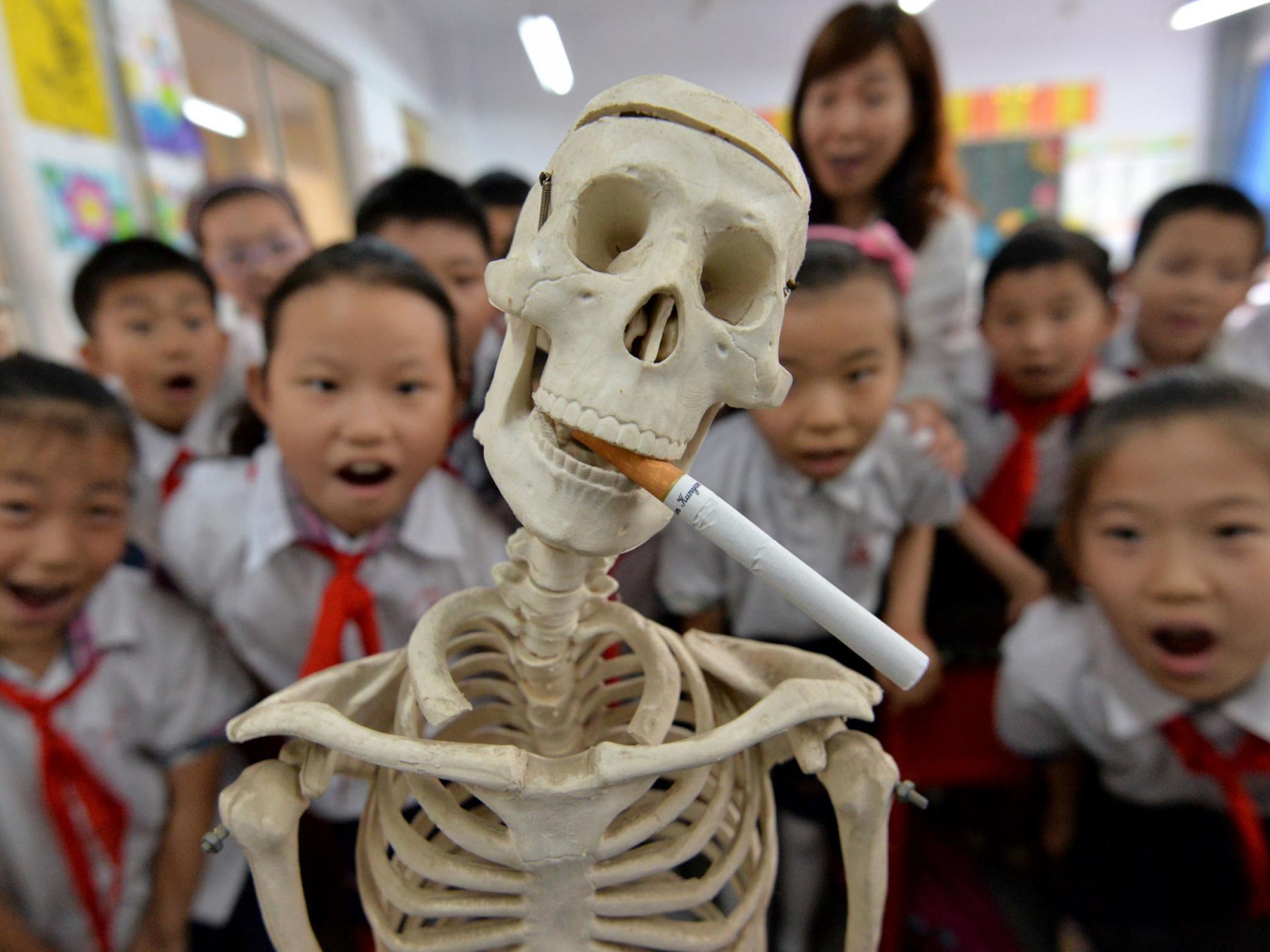Ban on cigarette displays cuts children buying tobacco in shops by nearly a third, study finds
But the Imperial College London study also revealed the ease with which children are still able to purchase tobacco

Your support helps us to tell the story
From reproductive rights to climate change to Big Tech, The Independent is on the ground when the story is developing. Whether it's investigating the financials of Elon Musk's pro-Trump PAC or producing our latest documentary, 'The A Word', which shines a light on the American women fighting for reproductive rights, we know how important it is to parse out the facts from the messaging.
At such a critical moment in US history, we need reporters on the ground. Your donation allows us to keep sending journalists to speak to both sides of the story.
The Independent is trusted by Americans across the entire political spectrum. And unlike many other quality news outlets, we choose not to lock Americans out of our reporting and analysis with paywalls. We believe quality journalism should be available to everyone, paid for by those who can afford it.
Your support makes all the difference.The ban on displays of tobacco products in shops may have reduced the proportion of children buying cigarettes by 17 per cent, according to new research.
A study into buying habits suggests the introduction of the 2015 ban may have prompted an immediate fall in children’s tobacco consumption.
The research, by Imperial College London, assessed survey responses from 18,000 11- to 15-year-olds from across England between 2010 and 2016.
Prior to the ban 57 per cent of children who smoked regularly bought their cigarettes in shops.
But the latest study, published in the journal Tobacco Control, revealed this fell to 40 per cent by 2016.
The study also revealed the ease with which children are still able to purchase tobacco. It suggests more than two in three child smokers had not been refused cigarettes when they last attempted to buy them – a figure which remained unchanged between 2010 and 2016.
NHS figures suggest just over one in 20 children smoked in England in 2016, a fall from just under one in 10 in 2010.
Dr Anthony Laverty, lead author of the research from the School of Public Health at Imperial, said: “We know that smoking kills one in every two smokers, and that children who smoke are likely to continue smoking throughout their lifetime, seriously increasing their risk of disease. We also know seeing cigarettes displayed in shops is linked to smoking, especially among children.
“This research shows that removing displays made tobacco less visible to children, and that fewer of them bought cigarettes there. Most countries worldwide still allow cigarettes to be advertised and displayed in shops. This research provides evidence that the introduction of display bans will be an effective measure against children smoking – and could help save them from starting a deadly habit.”
The research team analysed data from the Smoking, Drinking and Drug Use Survey from 2010 to 2016.
This anonymous questionnaire quizzes 11- to 15-year-old children across England, and is conducted at schools under exam conditions.
The findings also showed among the children who smoked, the most common source of cigarettes was from friends, followed by shops. This remain unchanged between 2010 and 2016.
There was no increase in children reporting they had purchased cigarettes from illegal sources. The proportion of children who said they had bought cigarettes from street markets – a major source of illegal tobacco – remained steady at under 10 per cent between 2010 and 2016.
The team also acknowledged that other measures were put in place between 2010 and 2016 that may have helped reduce smoking rates, such as the ban on cigarette vending machines and higher taxes.
Dr Laverty said: “During this time adult smoking rates have fallen and higher taxes have increased the price of tobacco. All these factors have a role to play, and these findings suggest removing cigarette displays are an important component. Smoking rates fall fastest when complementary measures are put in place.”
Dr Nicholas Hopkinson from Imperial’s National Heart and Lung Institute, and a senior author on the study, added: “These results are encouraging but more work is needed to ensure effective tobacco control.
“Our findings suggest it is still too easy for children to purchase cigarettes in shops. Enforcement is important, but government cuts have meant that councils have seen a 56 per cent reduction in trading standards officers between 2009 and 2016. A licensing system for tobacco retailers needs to be introduced – similar to that seen for alcohol – which could be paid for through a levy on tobacco industry sales.”
Join our commenting forum
Join thought-provoking conversations, follow other Independent readers and see their replies
Comments